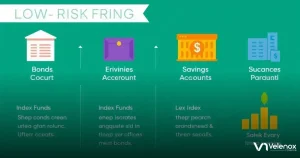Investment opportunities are abundant, but finding the right one can be challenging.
Understanding Different Types of Investment Opportunities
Investment opportunities come in many forms, each with its unique benefits and risks. Stocks are shares of ownership in a company. They can provide high returns but also come with higher risks. Bonds are loans you give to corporations or governments. They offer regular interest payments and are considered safer than stocks. Mutual Funds pool money from many investors to purchase a diversified portfolio of stocks, bonds, or other securities.
Real Estate involves buying property to generate rental income or profit from its sale. This can be a stable investment but requires significant capital. ETFs (Exchange-Traded Funds) are similar to mutual funds but trade like stocks on an exchange. They’re flexible and usually have lower costs. Commodities such as gold, oil, or agricultural products can hedge against inflation but can be volatile.
Cryptocurrencies are digital or virtual currencies using cryptography for security. They promise high returns but are highly volatile and speculative. Venture Capital involves investing in early-stage startups with high growth potential. It’s high risk but offers substantial rewards if the company succeeds. Peer-to-Peer Lending allows you to lend money directly to individuals or businesses through online platforms. It offers higher interest rates compared to traditional savings accounts but carries the risk of default.
ADVERTISEMENT
Evaluating Risks and Returns

When evaluating risks and returns in investment opportunities, you must weigh the potential benefits against potential losses. Each investment carries its own set of risks, whether it’s market volatility, economic downturns, or changes in interest rates.
Assessing the risk tolerance:
It’s vital to understand your own risk tolerance. Are you a conservative investor who prefers stable, low-risk options, or are you more aggressive, willing to accept higher risks for potentially higher returns?
Analyzing historical performance:
Look at how an investment has performed over time. Historical data won’t predict future results, but it provides context.
Potential returns:
Returns vary depending on the investment type and market conditions. Stock investments may offer high returns but with higher risks, while bonds might be more stable but with lower returns.
Balancing risk and reward:
Diversification can help manage risks. Spread investments across various asset classes to balance potential risks and returns. By strategically evaluating these factors, you can make informed decisions about which investment opportunities align with your financial goals for 2024.
Top Sectors to Invest in 2024
In 2024, several sectors show promise for investors seeking profitable opportunities. The technology sector continues to lead the charge with advancements in AI, robotics, and cybersecurity. These areas are seeing increasing demand, making them lucrative for long-term investments.
Healthcare is another sector gaining traction due to aging populations and the rise of telemedicine. Investing in biotech firms, pharmaceutical companies, and medical device manufacturers can yield substantial returns.
The renewable energy sector also presents significant opportunities as the world shifts toward sustainable energy sources. Solar, wind, and electric vehicle industries are expected to grow rapidly, driven by governmental incentives and increased awareness of climate change.
Lastly, consider the real estate market, particularly in areas experiencing population growth and urbanization. Investing in real estate can provide a steady income stream through rentals and potential value appreciation.
Diversifying your portfolio across these sectors can help mitigate risks and maximize returns. Always conduct thorough research or consult a financial advisor before making investment decisions.
Investment Strategies for Beginners

Starting your investment journey can be a daunting task, but with the right strategies, you can make informed and profitable decisions. Building a strong foundation begins with understanding basic investment principles and gradually exploring more complex financial instruments.
Firstly, set clear financial goals to determine what you want to achieve with your investments. Whether it’s long-term wealth accumulation or short-term gains, having a defined objective will guide your decisions.
Next, create a budget to identify how much money you can invest without affecting your daily expenses. Allocate funds carefully and consider starting with small amounts to get comfortable with the process.
Diversify Your Investments
Diversification is a key strategy that involves spreading your investments across different assets to reduce risk. Invest in a mix of stocks, bonds, mutual funds, and real estate to balance potential returns and exposure to market volatility.
Educate Yourself
Stay informed by reading books, articles, and staying updated with financial news. Knowledge is power in the investment world, and understanding market trends will help you make smarter decisions.
Utilize Technology
Leverage technology by using investment apps and online tools that offer insights, analytics, and portfolio management features. These resources can simplify the process and provide valuable support.
Lastly, consider consulting a financial advisor if you’re unsure about your choices. Professional guidance can help tailor strategies to your specific needs and goals.
By following these investment strategies, beginners can build a robust and diverse portfolio, setting the stage for successful financial growth.
How to diversify your investment Portfolio
Diversifying your investment portfolio is crucial to minimizing risks and maximizing returns. By spreading investments across different asset classes, you can protect against significant losses and take advantage of various opportunities. Firstly, consider geographic diversification by investing in both domestic and international markets. This helps mitigate risks associated with economic downturns in a particular region.
Next, explore various asset types like stocks, bonds, real estate, and commodities. Each asset class reacts differently to market conditions, so diversifying can stabilize your portfolio. For instance, during stock market volatility, bonds might offer more stability.
Additionally, consider industry diversification. Investing in a mix of sectors like technology, healthcare, and energy ensures that your portfolio isn’t overly reliant on the performance of a single industry. This makes your investments resilient to sector-specific downturns.
It’s also wise to include alternative investments such as private equity, hedge funds, or cryptocurrencies. These can provide higher returns and further diversification. However, they come with higher risks, so allocate a smaller portion of your portfolio to these options.
Lastly, use investment funds like mutual funds or ETFs as they inherently offer diversification by pooling together a variety of assets. This allows you to achieve broad exposure without having to manage individual investments actively.





